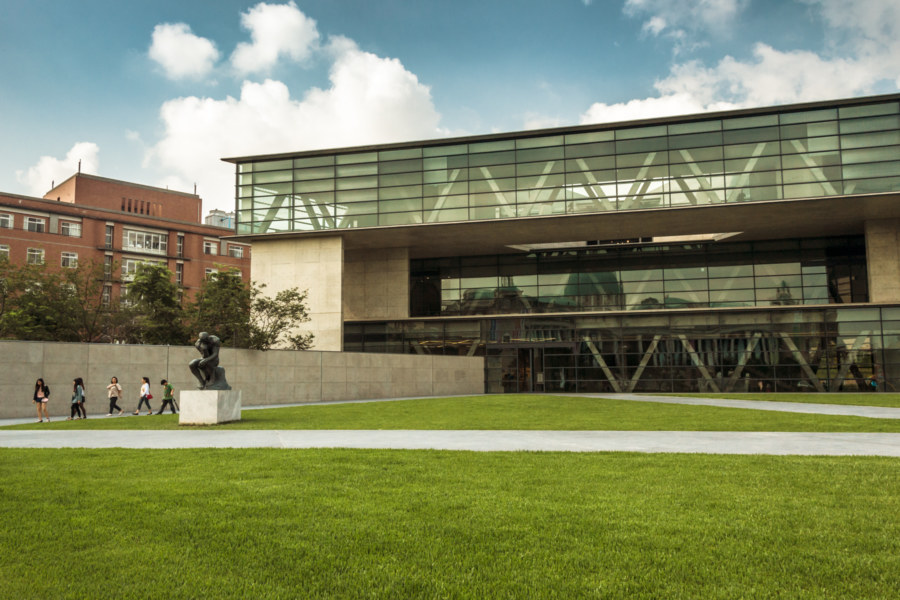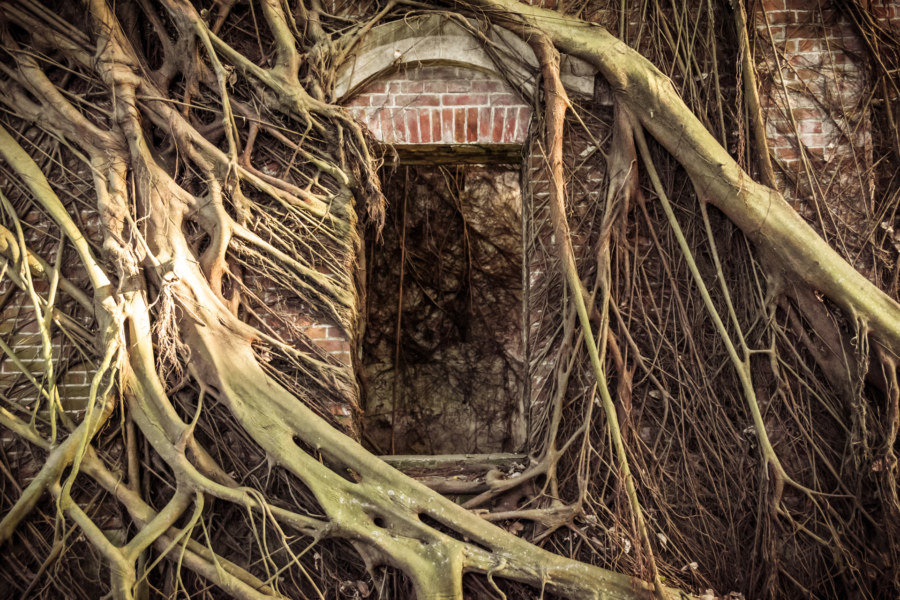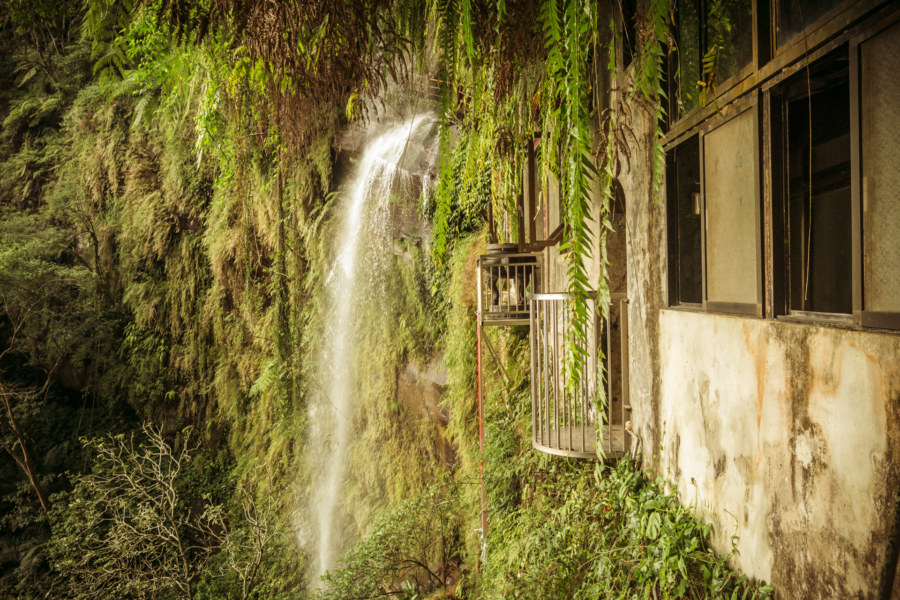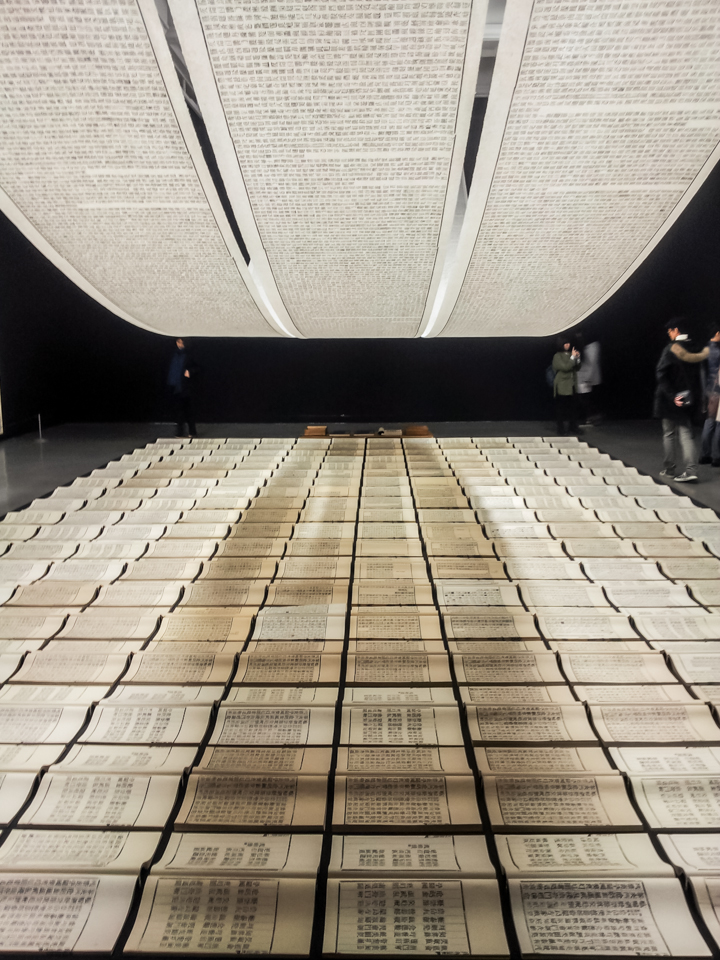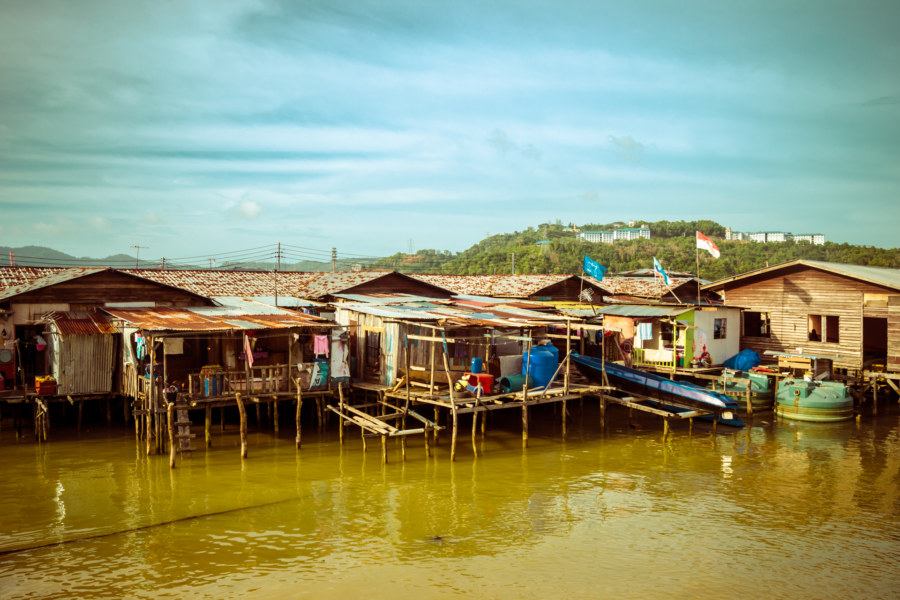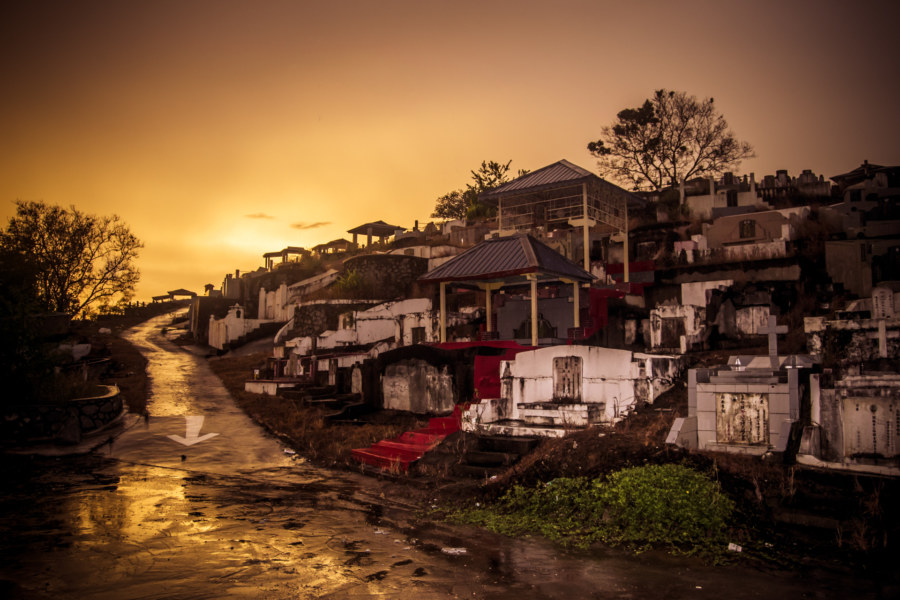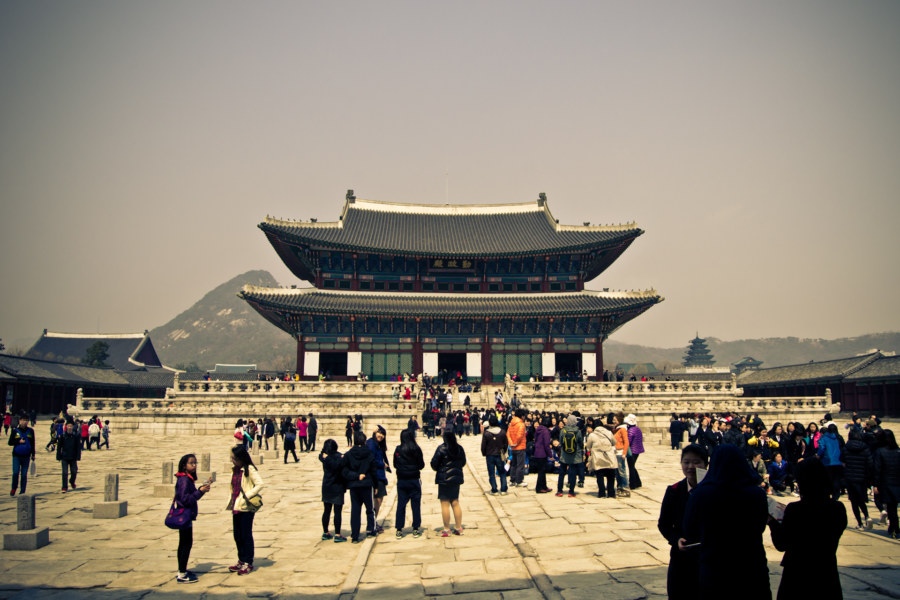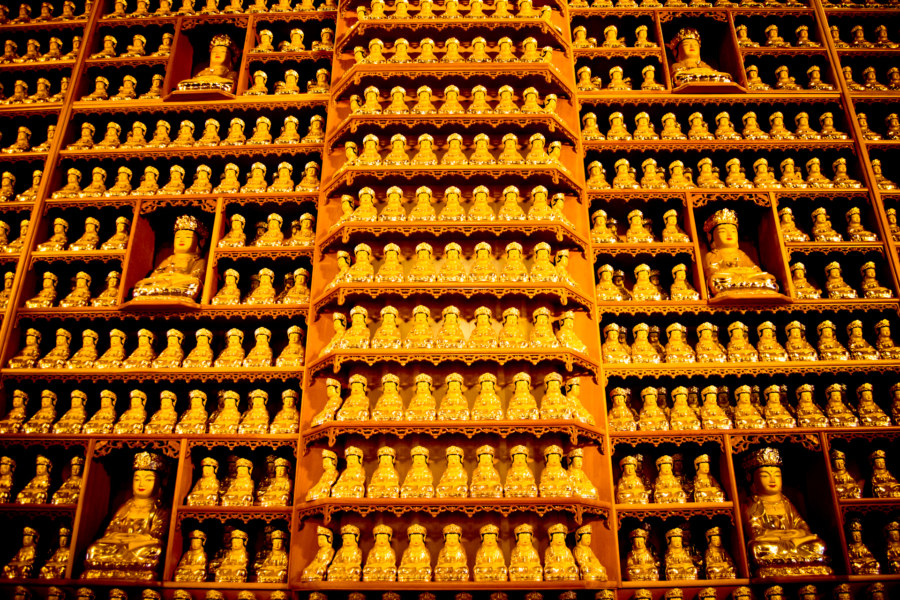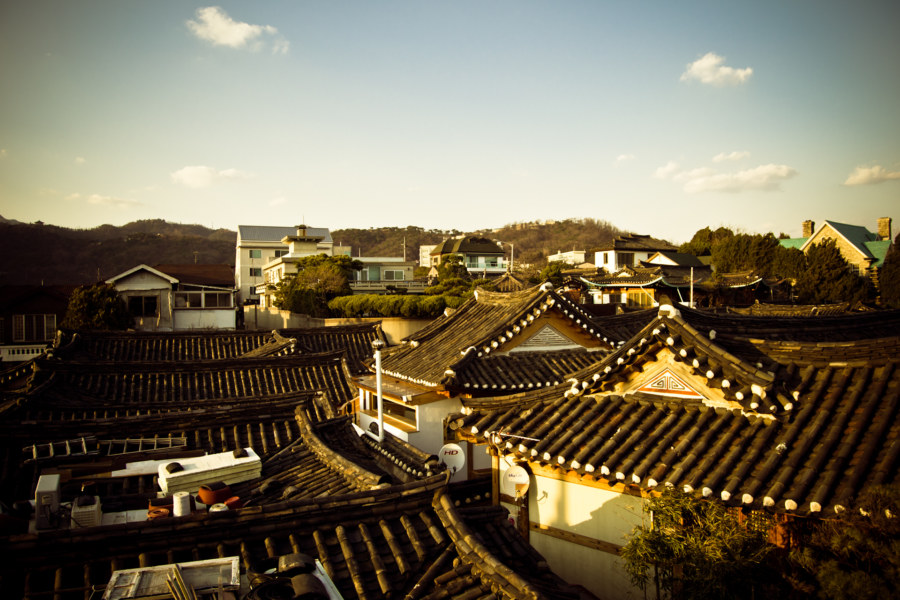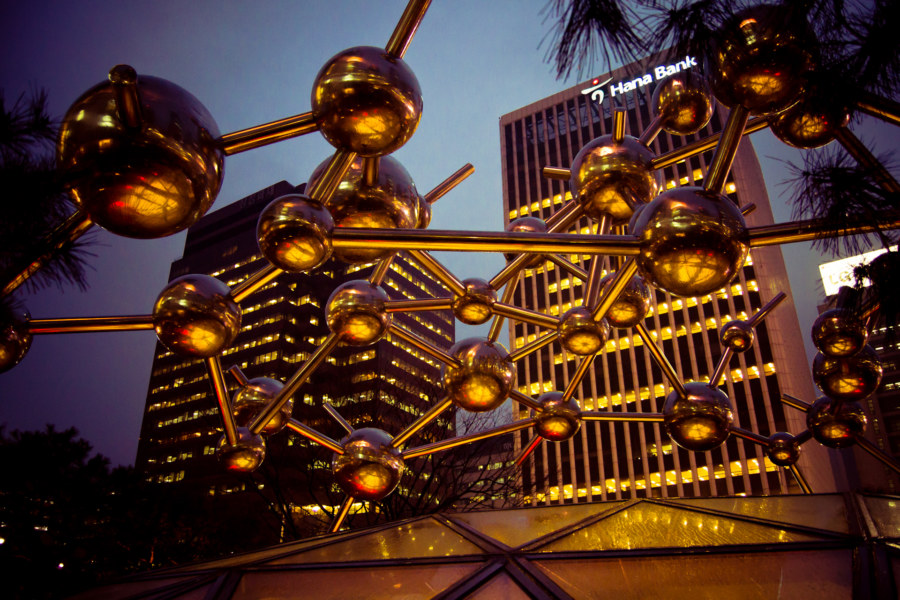The Asia Museum of Modern Art 亞洲現代美術館 (official site in Chinese) is a strange thing to find amid the rural-industrial sprawl of southern Taichung. Located on the outskirts of historic Wufeng, it is part of the much larger Asia University 亞洲大學 campus, itself riddled with European-inspired architectural curiosities like a gymnasium designed to look like the Colosseum of Rome. The art gallery, straying from the kitsch theme of the rest of the university, is an original design by renowned Japanese architect Tadao Ando. It took nearly seven years to build and opened in 2013.
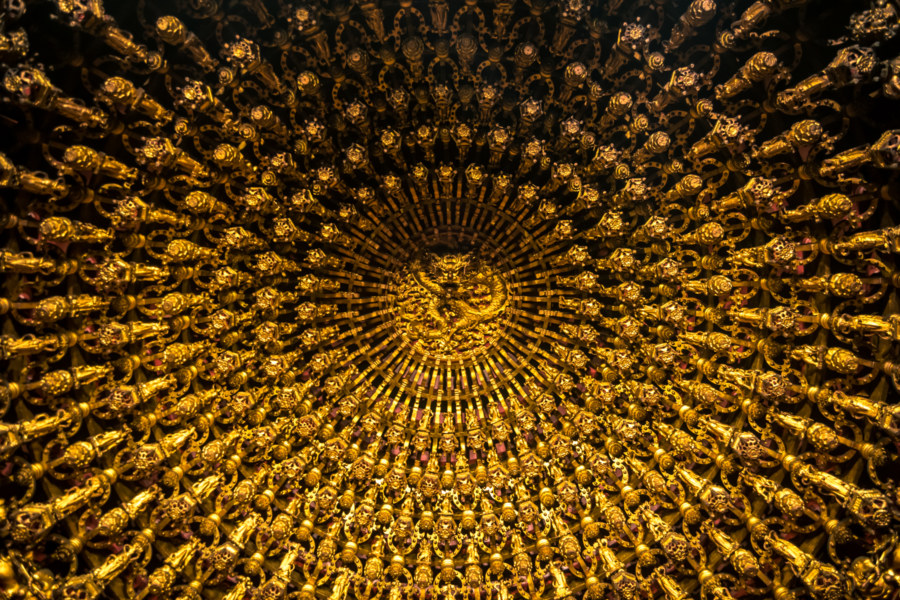
Cultural observations, insight, and confusion.
Minxiong Liu Family Mansion 民雄劉家洋樓
The Liu Family Mansion (劉家古厝) in Minxiong, Chiayi, is one of the most famous ruins in all Taiwan. Situated in the countryside just outside of town, this old Baroque Revival-style red brick building is more informally known as the dreaded Minxiong Ghost House (民雄鬼屋). It was built in 1929 for Liú Róngyù (劉溶裕), a businessman with seven children, and appears to have been abandoned sometime in the early 1950s, not long after the end of Japanese colonial rule.
Yinhedong 銀河洞
Yínhédòng 銀河洞 (literally “Milky Way Cave”) is an extraordinary cliffside temple next to a gorgeous waterfall in the mountains just outside of Taipei. Originally founded in 1914 and extensively renovated in 1958, the temple recently celebrated its centennial, as proclaimed by the red banner draped out front during my first visit in February 2014. In a story that sounds entirely apocryphal, the cave was reputedly a hideout for Chén Qiūjú 陳秋菊, a Shenkeng resident who famously led a rebellion in the earliest years of the Japanese colonial era.
Xu Bing Retrospective in Taipei
In March of 2014 I went to see the Xú Bīng (徐冰) retrospective at the Taipei Fine Arts Museum (台北市立美術館), easily my favourite gallery space in Taiwan. Xu Bing is a Chinese artist working mainly with representations of language, particularly in the context of interactions between East and West. I first discovered him through an article about character amnesia that discussed A Book From The Sky (天書), a work that continues to capture my imagination.
I should warn you: I’m not an art critic and these photos were shot on a cruddy smartphone. If you’d like to peruse something much more informed and professional about this exhibition I recommend perusing the curator’s statement, English language reviews here, here, and here, or this virtual tour. What follows are a few fleeting impressions of my own from a few hours in Xu Bing’s world.
Kampung Numbak
I discovered Kampung Numbak using Wikimapia, a mash up of Google Maps and Wikipedia, while staying at 1Borneo, a megamall on the outskirts of Kota Kinabalu, the capital of Sabah. After finding it online I decided to pay Numbak a visit. There was something very strange about the juxtaposition of Borneo’s biggest mall and this impoverished village of 5,000 a stone’s throw away.
Tuaran Chinese Cemetery
These photos were shot while touring an old Chinese cemetery in Kampung Bakut, a village just outside of Tuaran in the Malaysian state of Sabah. Many Hakka Chinese migrated to this area in the late 19th century, hence the need for a place formally known in Malay as Tanah Perkuburan Orang Cina Tuaran (Chinese: 斗亞蘭華人福壽山). It is a forlorn, neglected place: a hilltop encrusted with elaborate tombs in an elegant state of disrepair. Cemeteries are typically avoided by the local people, a consequence of the widely-held belief that anything to do with death will bring bad luck. Even so, these burial grounds are littered with rubbish and empty glue canisters—an indication that the cemetery entertains at least a few visitors now and then.
Final Thoughts About My First Trip to Seoul
This post collects my final thoughts about my trip to Seoul, South Korea, in April 2012. To write these posts I have been working from a series of letters I sent home to family and friends as well as some notes I jotted down while still in Seoul. Not everything fit into previous posts but there are a few things I still wish to share. Expect to read an assortment of anecdotes and fleeting impressions from the remainder of my stay in the South Korean capital.
Bongeunsa Temple
Bongeunsa 봉은사 (Hangul: 봉은사; Hanja: 奉恩寺) is a Buddhist temple in the Gangnam (yes, that Gangnam) of Seoul immediately across from COEX Mall, supposedly one of the largest in Asia. Towering skyscrapers on the horizon are a stark reminder of the modernity outside the temple grounds. Inside, many of the structures show their age, particularly the antique bell house (depicted in the last photo below). Still, little remains of the original Bongeunsa. As with other historic sites in Seoul it has undergone many renovations and improvements over the years. The results are pleasant enough to walk around but one does not feel the weight of history in this place.
Seoul Inspired
Last time I wrote about my experiences with the dark side of Seoul. This time I will pick up where I left off to share some my more inspirational experiences in South Korea’s capital, especially within the scenic Bukchon Hanok Village 북촌한옥마을 (Hanja: 北村韓屋마을).
Learning to Love Kimchi
Monday, my third day in Seoul, was a series of accidental misadventures and surprise insights. Despite the intensive scheduling of the previous day, much of what transpired was entirely unplanned. I woke up late and went to cash a bunch of traveller’s cheques that I had originally purchased for emergency use in India. It seemed like a simple enough task but it was anything but. I visited nearby Woori Bank where I was told to wait for a teller in the business section. I languished in a chair for a half hour with only a single person in front of me, a woman. The customers already being served by the tellers were taking their sweet time for no reason that I could discern. I waited patiently, not knowing what to make of it.
